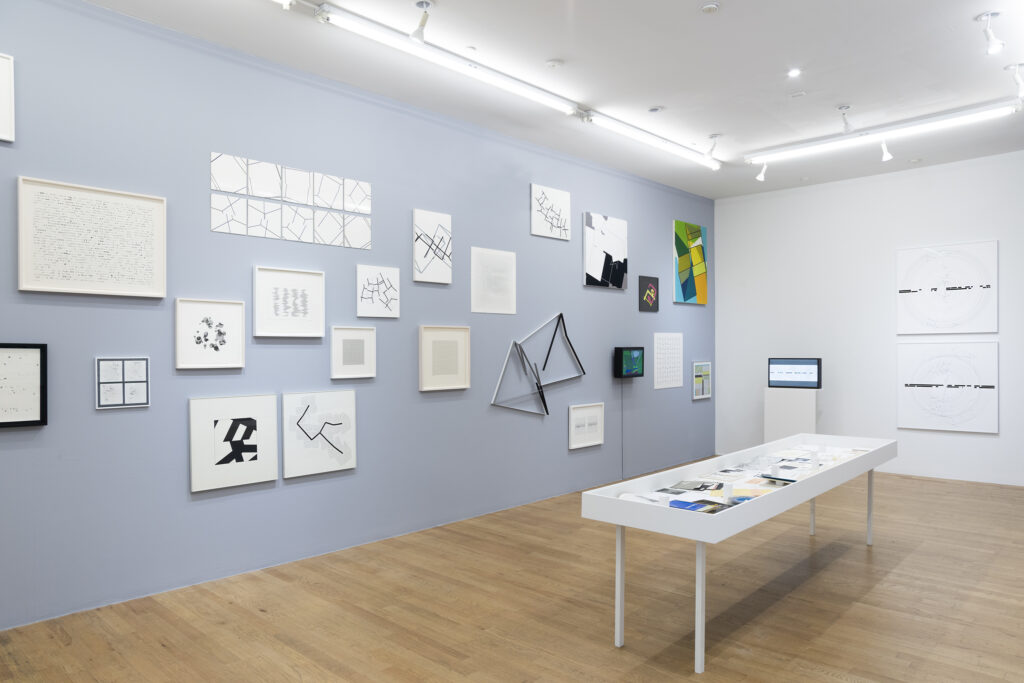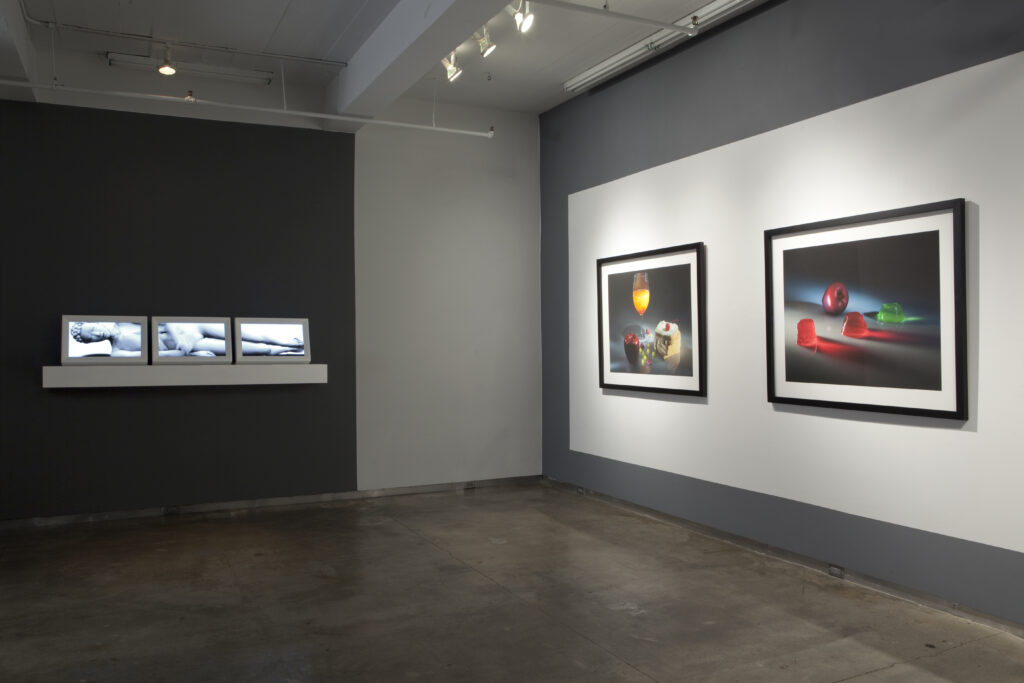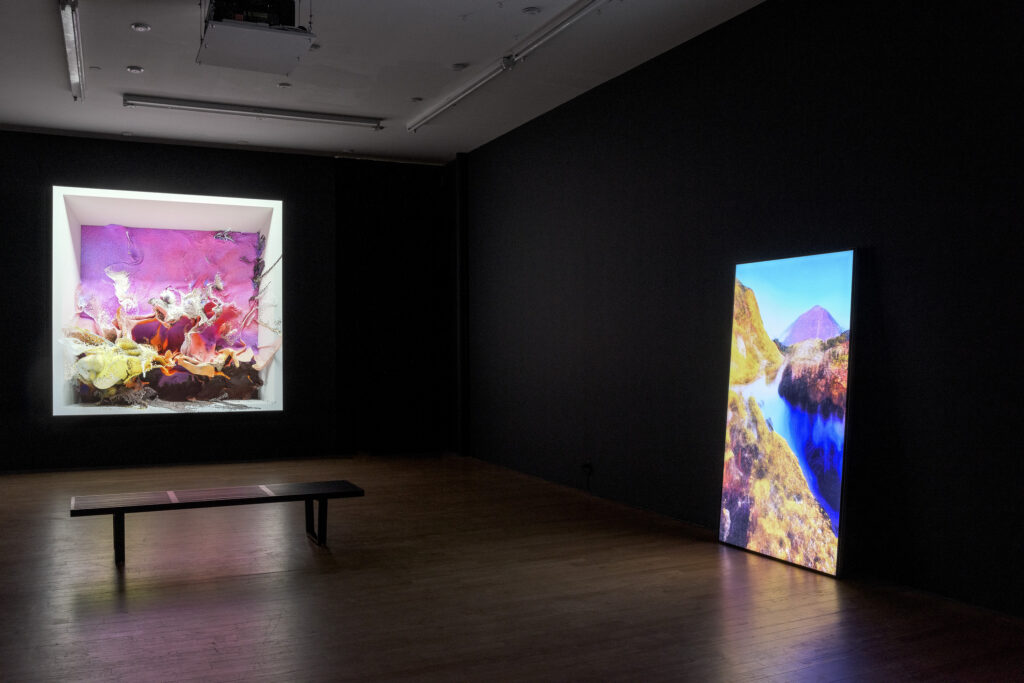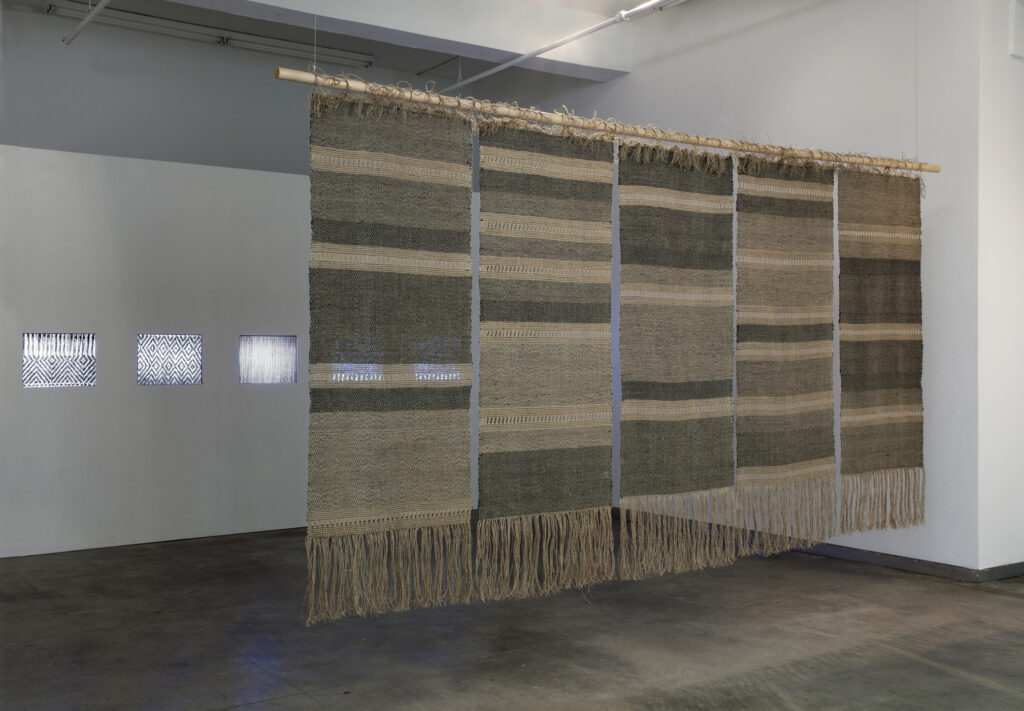Pau Waelder

Steve Sacks founded bitforms in New York in November 2001, at a time when digital art was getting attention among the contemporary art institutions in the USA as well as Europe. Major exhibitions held that same year, such as Bitstreams and Data Dynamics at the Whitney Museum of American Art in New York and 010101: Art in Technological Times at the San Francisco Museum of Modern Art were particularly inspirational for him.
Photo: Joanna Holloway
The name of the gallery (always spelled in lowercase) merges the words “bit”, understood as a basic unit of information, and “forms”, referring to any art form, as a statement of its commitment to art and technology. At 529 West 20th Street, the gallery was initially located in the heart of Chelsea, the epicenter of New York’s art scene. In 2005, bitforms opened a second gallery in Seoul, but the market for new media art was still far from consolidated, and this space closed its doors in 2007. In 2014, after thirteen years on a first-floor space in Chelsea, bitforms relocated to a ground-floor property on the Lower East Side.
Over two decades, bitforms has achieved an influential position in the contemporary art market as a gallery devoted to digital art, participating in major art fairs and representing some of the most recognized artists in this field, such as Manfred Mohr, Rafael Lozano-Hemmer, Casey Reas, Quayola, Auriea Harvey, Refik Anadol, Gary Hill, Claudia Hart, Beryl Korot, Marina Zurkow, Daniel Canogar, Daniel Rozin, Siebren Versteeg and many others. On the occasion of the third series of Niio Commissions, which was curated by Sacks, we sat down with the gallerist to discuss his views on the development of the contemporary art market and the role that digital art is now playing in it.

How would you compare the general awareness of digital art when you opened your gallery in 2001, and today?
In 2001 there were things happening in the art world and underground scenes, but media art was not accessible or exposed as it is today. There is no comparison. Today it is now mainstream, thanks to three letters, NFT.

The initial statement of the gallery read: “bitforms will position digital art as an influential and innovative art form that is evolving and warrants recognition.” Would you say that you have achieved this goal?
The goal of the gallery from the beginning was to present artworks from all generations of artists that were experimenting with media. It took a few years, but we were able to build a diverse stable of artists, each having a voice and a vision tied to their generation. History was essential. We purposefully worked with artists of historical significance to enhance the credibility of the younger generation of artists and the genre itself.
“The introduction of software art through our program was one of the more significant moments at the gallery. Generative, interactive and immersive art opened up innovative ways of creating, experiencing and appreciating art.”
In your gallery, and in collaboration with your artists, you have developed methods for selling digital art, and particularly software art. What was your experience with these formats?
The introduction of software art through our program was one of the more significant moments at the gallery. Generative, interactive and immersive art opened up innovative ways of creating, experiencing and appreciating art. As with video and photography before, there was apprehension and doubt about the validity and credibility of using technological media to create works of art. Today, software or generative art is among the most popular art being purchased today. The use of software in the creation of art has expanded conceptually and revealed many new art forms using digital technologies such as virtual reality (VR), augmented reality (AR), and artificial intelligence (AI), to name a few. None of these artistic practices would be possible without the mastery of code.

Twenty years ago, you envisioned the possibility of collectors having a dedicated screen for digital art and experiencing a rotating collection of artworks. Do you see our present moment as the right time for this vision?
Very early on I felt people would have screens in their homes devoted to media art. The idea of having a single location with a curated selection of works was necessary in order for the medium to thrive. Of course NIIO has a similar vision which is why I chose to work with them from the start. There were no tools at the time that allowed for the collection and management of media art, and my collectors were demanding it. Today, with the massive popularity of NFTs, millions of people are now aware of media art and many are looking for elegant ways to present their works. Screens have also come down in price, gotten larger and have greatly improved their resolution. It’s a very good moment for media art to enter the “art” dialogue for the masses.

Jan St. Werner. Alchemical. bitforms gallery, New York, 2021
Over the last two decades, bitforms has become a beacon of digital art in the contemporary art market. In your experience, has the position of galleries devoted to digital art changed in the contemporary art market?
I would say over the past 10 years we have seen the integration of media artists into mainstream galleries, and in the past few years there have been others more devoted to media art. Also, museums began to witness the popularity of media art installations drawing large crowds across many generations. Again, when the NFT explosion occurred there was a much broader audience that became very curious about how they could purchase and live with non-traditional art forms.

In 2021, you launched bit.art to showcase NFT drops by your artists in an online platform. Did you create this space as a reaction to the endless thumbnail grids offered by NFT marketplaces? What is your opinion about how NFTs are commonly displayed and curated?
When NFTs started to show up everywhere, the gallery needed to take a stance. We were unhappy with how people were defining quality media art and how little was known about its context and history. The majority of NFT platforms gave no context, they were just marketplaces, primarily focused on buying and flipping. No emotional attachments. No conceptual rigor. It was all about the money. Which is fine to a degree, but not when the entire basis of NFT/digital art was to define a new type of commodity to be traded, not appreciated or intellectually challenging.
“Niio gives my artists more exposure and it’s much easier for collectors to view and manage their artworks”
bit.art tried to connect with how artists conceived the presentation of their work, both on a cultural and market level. The site never really succeeded financially, but we needed to make a stance and present our views of this nascent marketplace. Things are changing. More artists are creating serious work and thinking about presentation, and more collectors are excited about the art instead of just looking to flip artworks quickly and make a profit.

Niio has recently launched its third series of commissioned artworks with artists represented by bitforms. Can you tell us briefly what you find interesting about the platform?
I have very much enjoyed curating on the NIIO platform. It gives my artists more exposure and it’s much easier for collectors to view and manage their artworks. As I said earlier, there is no other platform in the market that gives artists and collectors this type of control and freedom.
